By Jonathan Katz
It’s spring! It is time, once again, for The Attack of the Invasive Plants. Invasive plants succeed because they grow like crazy, choking out native plants that can’t keep up. As they emerge from the brown dormancy of a too long, too cold winter, they are easy to spot.
This young Japanese knotweed, above, is emerging from a 45-degree rocky slope on Linden Point, overlooking the Sound. It/they are about two feet tall. Late last summer this area was cleared of Japanese knotweed. Someone put in the time and effort to try to get rid of it, but did not succeed. The fast-growing stems and huge leaves crowd out and shadow out ordinary ground cover. Sometimes I think knotweed will win: in ten years it will be the last plant standing.
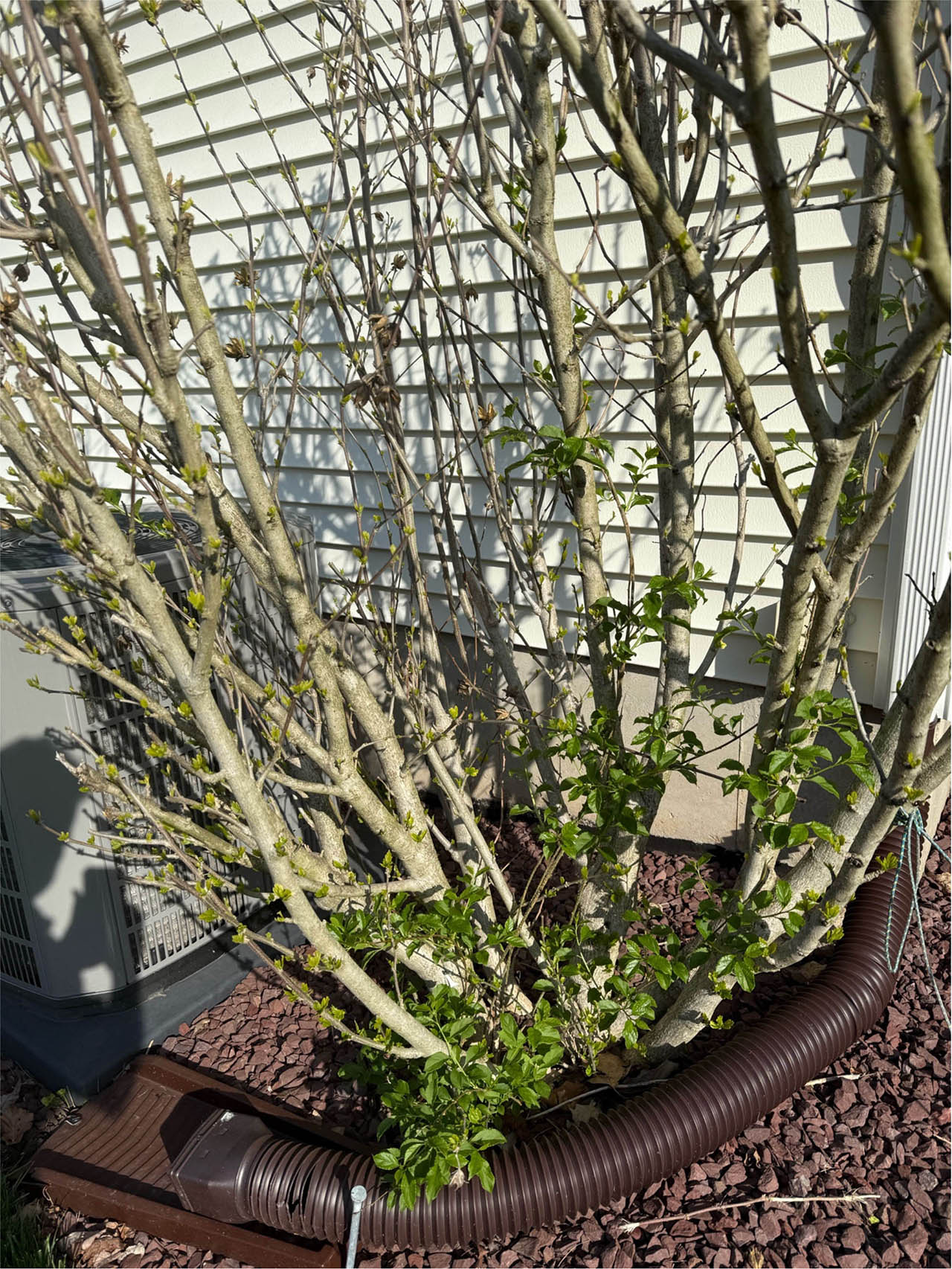
Some plants grow absurdly fast, like this Rose of Sharon, invaded by Oriental bittersweet vine. The Rose of Sharon gets full sun on the corner of my house. We prune it back to a dry, stalky stubble every year, yet it generates massive foliage and drops little babies that we pull out by hand. At its base is a fledgling bittersweet vine, which was cut back to ground level last fall and is already halfway up the bush as of May 3. In the closeup below, the bittersweet has thrown several turns around a Rose of Sharon stem, (dead-center of photo) and some of the pieces I cut out on the same day were over four feet long.

Not having done any science on the question, I suggest that Oriental bittersweet can grow on the order of inches a day. Left unchecked, it can climb 60 feet, and make wrist-thick woody vines that grow nifty spirals, and wrap around and strangle native trees. (If you want to take it on, cut through the vines at the base with loppers or a saw, and let it die out above. It will eventually dry out and fall. If you yank on it, it can crash down on your head, so protect yourself at all times. It is, however, great fun to pull down a 20 or 30 foot piece of young vine and drag it off. )
Here is another one that is easy to spot in the springtime — “Burning Bush” or Winged euonymus. I found this one on the Branford Trail, near Ecology Park. The prominent ridges or wings on the bark are distinctive and easy to see, or touch. It is coming into leaf, faster than some of the surrounding foliage.
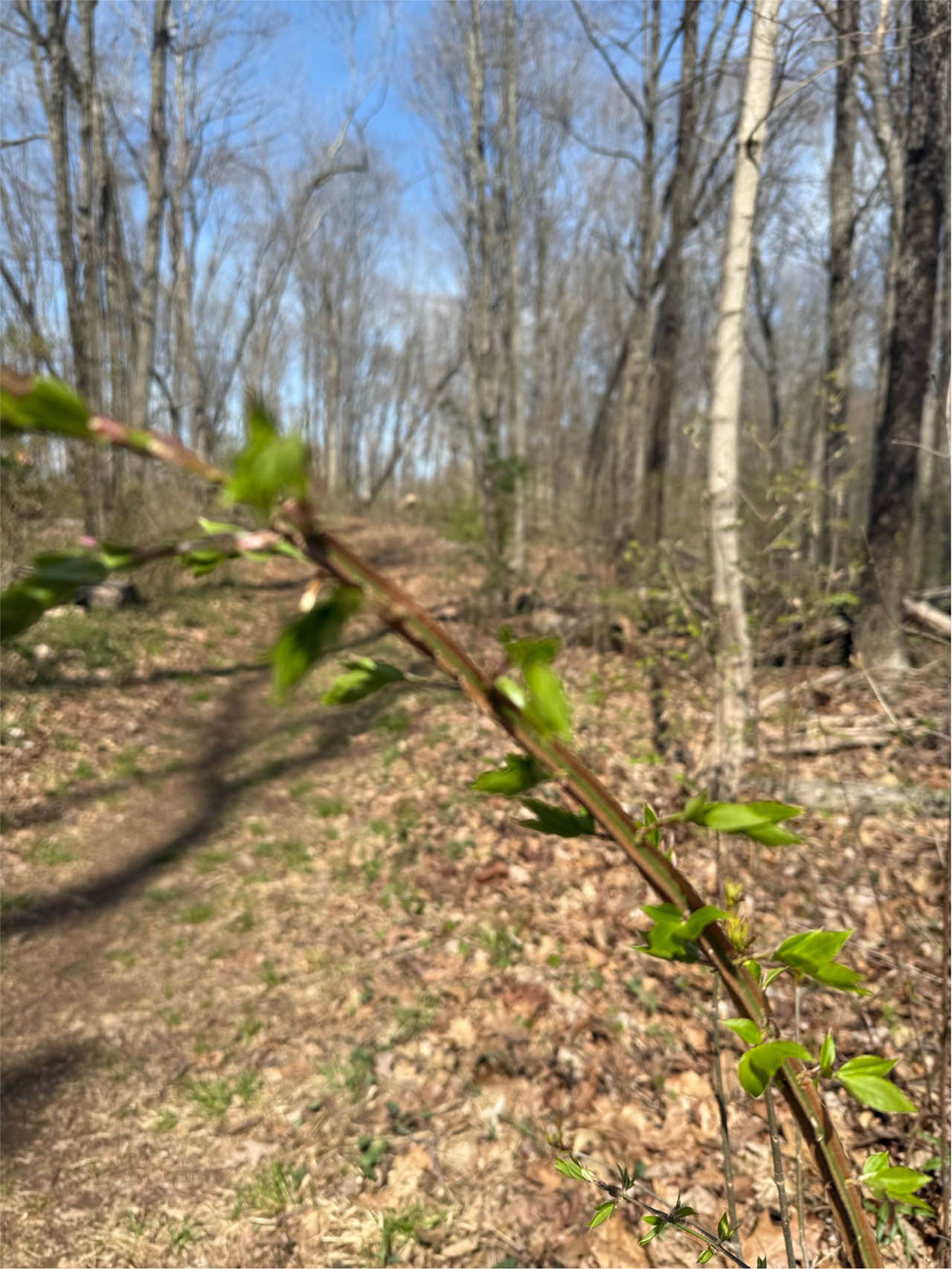
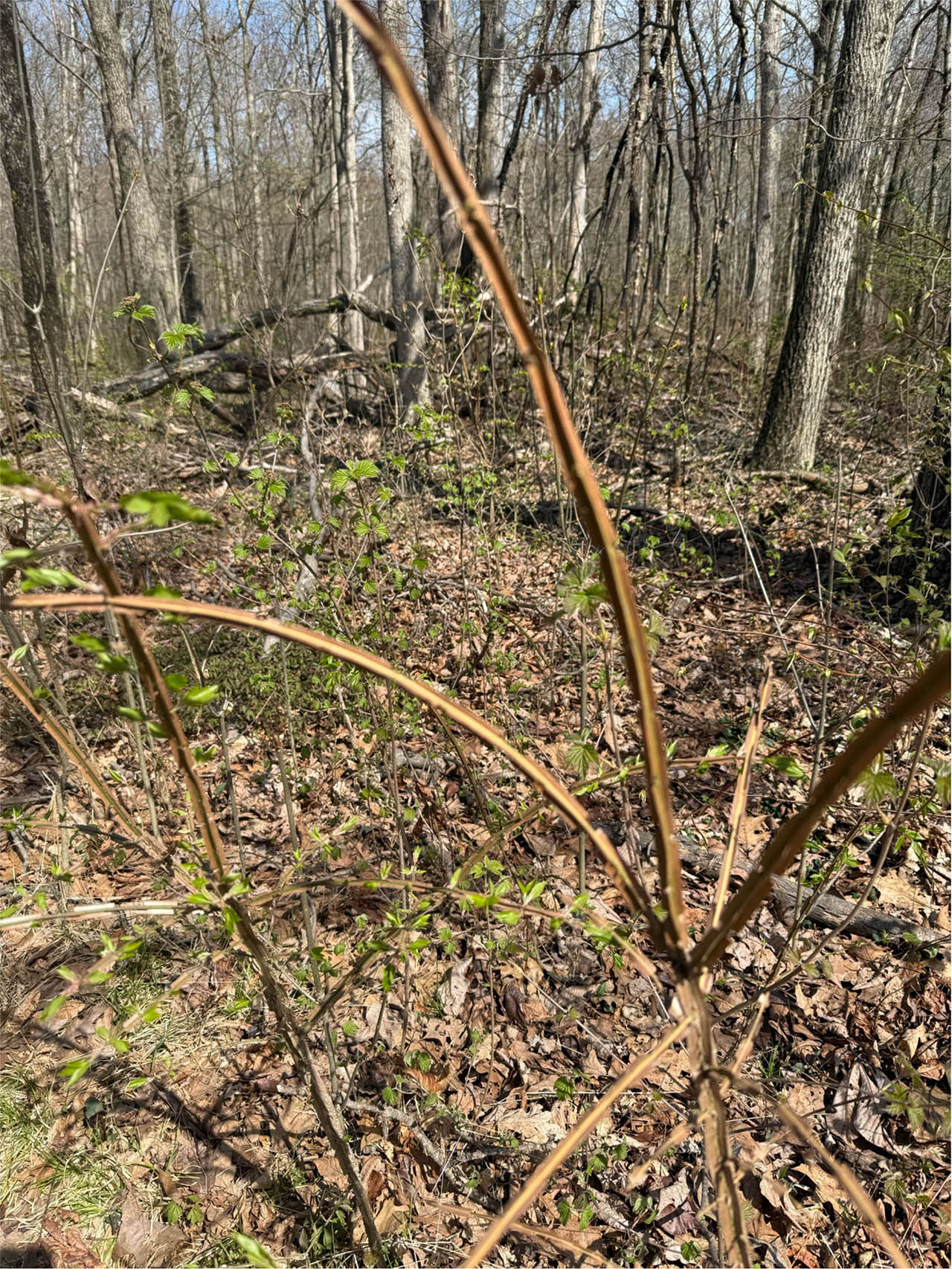
Mugwort in the spring looks like ground cover. The leaves, when rubbed, emit a distinctive spicy smell, like oregano or “Italian seasoning.” The young mugwort, below, with flat, complex leaves in the foreground, is in the process of overwhelming a peony, with narrow, dark-er leaves, slightly taller against the rock. The plants shown are about 18 inches tall.
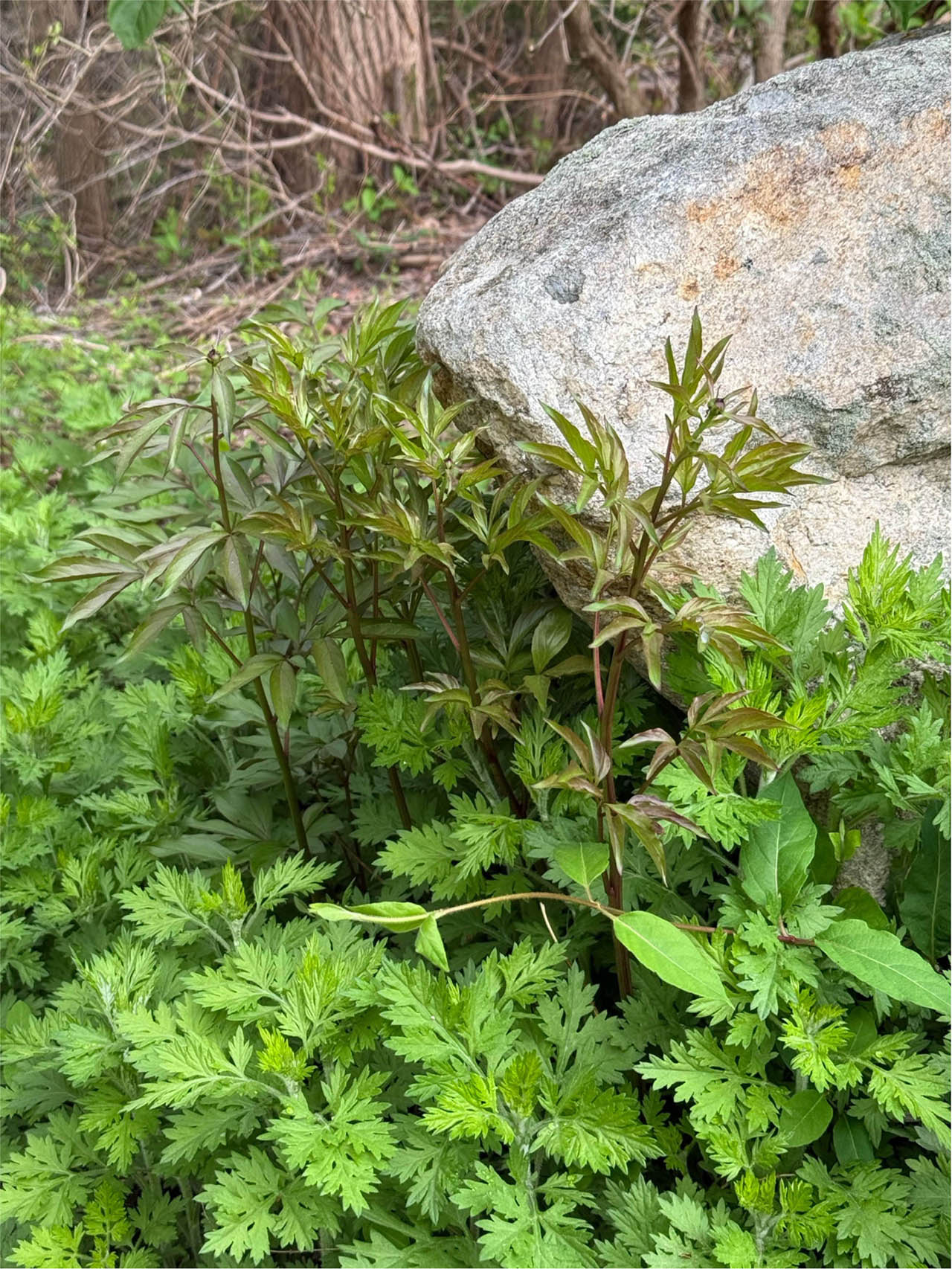
Invasive plants can form impenetrable thickets, such as the multiflora rose shown below, which is nearly 10 feet tall. “Impenetrable thicket” is a cliché of Southern Gothic noir mystery writing, but here it is real. Say, for example, you were being chased by a bear. If you ran into this wall of multiflora you would be snagged by the thorns, stopped in your tracks, and eaten by the bear. This would draw national headlines and make you famous.
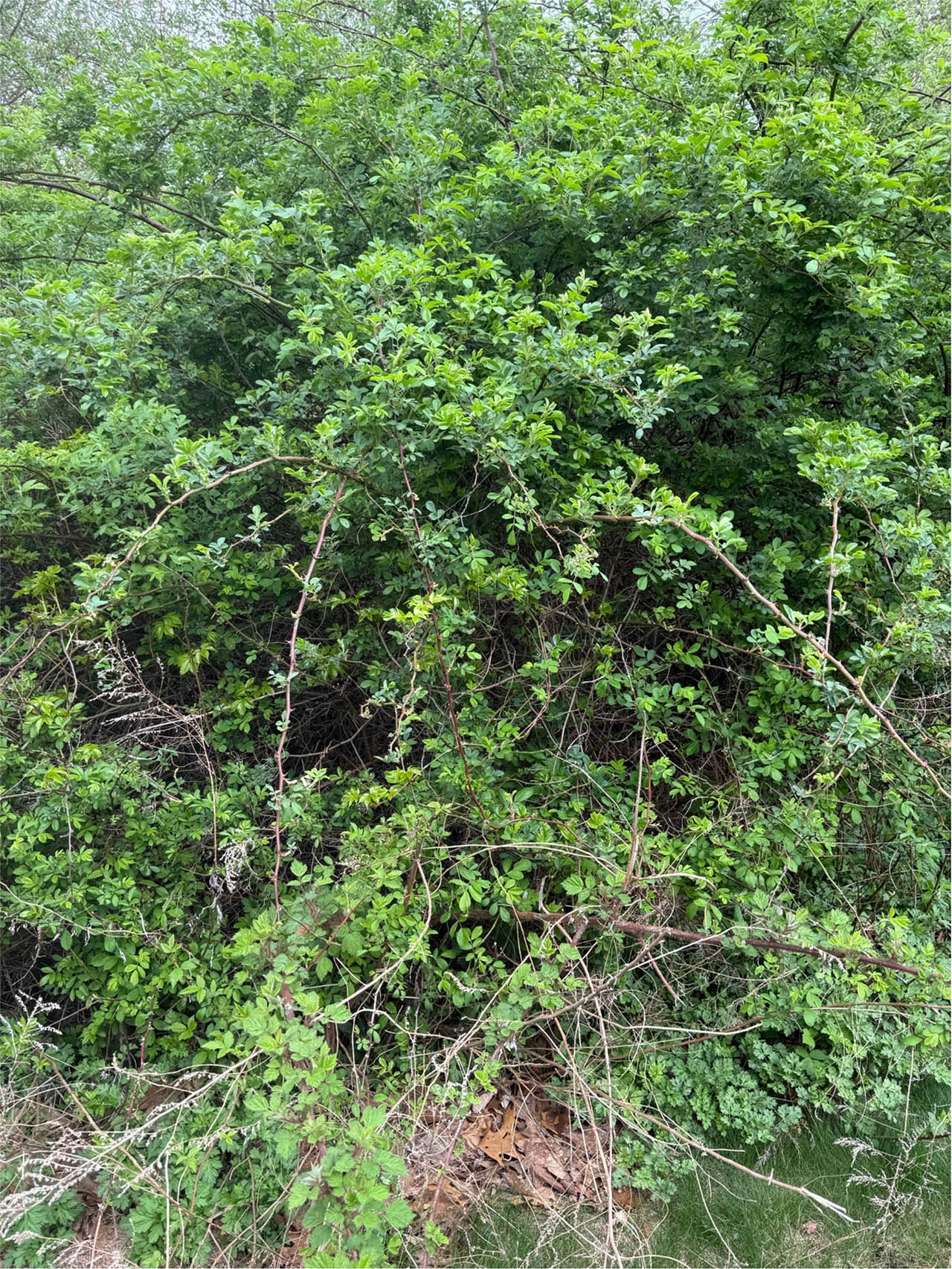
For more information about the invaders, take a moment to scroll through the Connecticut Agricultural Experiment Station’s “Field Guide and Plant Management Calendar to Selected Invasive Terrestrial Plants Found in Connecticut.”
If I were writing a book review of this document, it would be: “Too much title, just the right amount of information, terrific pictures. Best beginner invasive resource I’ve seen.”
For more information about Connecticut invasives and how to deal with them, please check out the Connecticut Invasive Plant Working Group website.

